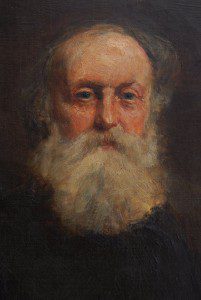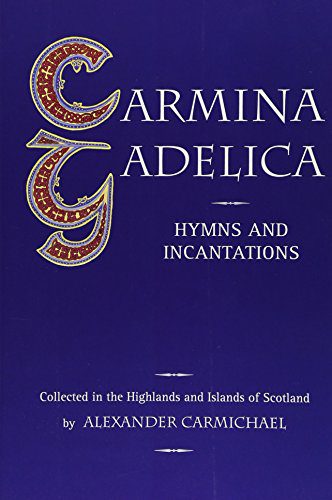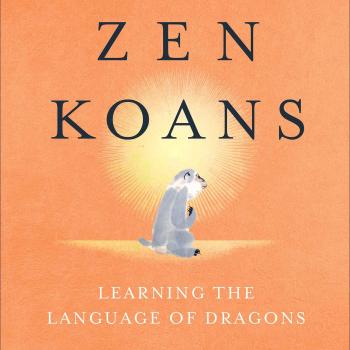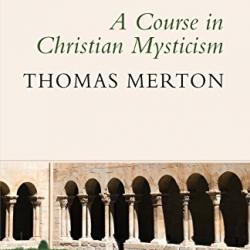You are the joy of all joyous things,
You are the light of the beam of the sun,
You are the door of the chief of hospitality,
You are the surpassing star of guidance,
You are the step of the deer of the hill,
You are the step of the steed of the plain,
You are the grace of the swan of swimming,
You are the loveliness of all lovely desires.
— “The Invocation of the Graces”
from the Carmina Gadelica
(modernized language)
I recently have acquired a copy of the latest edition of the Carmina Gadelica: Hymns and Incantations Collected in Highlands and Islands of Scotland. And it’s beautiful.
One of the great classics of Celtic literature, this tome (the one-volume edition is almost 700 pages long!) is a compendium of what was originally a six-volume collection of oral folklore, prayers, chants, incantations, hymns, blessings, and poems that an amateur folklorist named Alexander Carmichael collected in Gaelic-speaking Scotland over a fifty-year period starting around 1860.

It is a record of the heart of Celtic Christianity, not as a theory found in libraries or classrooms, but as a lived spirituality of people who practiced an ancestral way of life, attuned to the rhythms of nature and the wisdom of their ancestors.
Carmichael was an exciseman — in other words, a tax collector — for the British government, working in Scotland. But like St. Matthew in the New Testament, he used his unpopular career as a springboard to doing something very good. Even 150 years ago, it was apparent that the old Gaelic culture in Scotland was vanishing. The old Celtic tongue was already in decline (today only about 57,000 people speak Gaelic in Scotland, and only a fraction of those speak it fluently), and when a language dies, an entire culture dies.
Carmichael realized this, so he began to document the oral tradition of the Gaelic people — a process of amateur folklore that would lead, eventually, to the Carmina.
Unfortunately, Carmichael was not a trained anthropologist, and did not observe rigorous methods for carefully preserving the material he collected. In fact, the evidence points in almost the opposite direction: that the material preserved in the Carmina, far from being preserved exactly as it was first collected by Carmichael, was in fact edited or adapted for publication. As Wikipedia notes,
Eventually, Carmichael’s editing methods were roundly challenged in 1976 with the publication of Hamish Robertson’s article in Scottish Gaelic Studies, “Studies in Carmichael’s Carmina Gadelica“. Having searched for manuscript copies of charms appearing in the third and fourth volumes, Robertson accused Carmichael of meddling with, altering, and polishing original texts: ‘hardly one had not been touched up in some way, sometimes quite drastically’.
Following Robertson’s critique, even defenders of Carmichael came to admit that much “of the first three volumes of the Carmina must be taken as a literary and not as a literal presentation of Gaelic folklore.”[1]

So think of the Carmina Gadelica as a fantasia on Gaelic spiritual folklore. We can lament all the wisdom of the Gaelic-speaking people that has been lost, both because of the decline of that ancient Celtic language, and also because Carmichael was not as careful a folklorist as we might hope.
But if we let go of the idea that the Carmina Gadelica is supposed to be some sort of pristine collection of long-lost folklore, and accept it for what it is: as one person’s vision of how traditional Celtic spirituality continued to shape the minds and hearts of Scottish folk, well into the 19th and even early 20th centuries — then we realize that it’s still a treasure.
In the original six volumes (some edited by Carmichael, others by his daughter or students of his), the prayers, poems and songs were presented in both Gaelic and English. The one-volume edition from Lindisfarne Books only presents the English text. If you speak (or are learning) Gaelic, you might want to find the bilingual edition, but it’s out of print and can easily set you back $700 or more for the entire set. So for those of us whose appreciation of Celtic spirituality is framed by our lack of fluency in a Celtic tongue, the one-volume edition is more than adequate.
With over 550 prayers, poems, songs, runes, incantations, invocations, words of healing, protection charms, and other texts, the Carmina offers a glimpse into a spirituality shaped by the land and sea of the Scottish highlands and islands, deeply Christian, yet also inclusive of old pagan ways, such as fairy lore. Here you will find prayers for almost any routine task that a farmer or a fisherman or homemaker might use: prayers to bless the milking of the cow, the lighting of a fire, the coming of the new moon, the undertaking of a journey.
What emerges is a sense of a people who lived with one foot securely grounded on the good earth, and the other reaching with trust and joy into a mystical place where God is not elsewhere.
Here’s another little snippet for you:
I am bathing my face
In the mild rays of the sun,
As Mary bathed Christ
In the rich milk of Egypt.Sweetness be in my mouth,
Wisdom be in my speech,
The love the fair Mary gave her Son
Be in the heart of all flesh for me.
I don’t think the latest edition is newly typeset from the first one-volume edition published in 1992. But it has a gorgeous new cover and is printed on a lovely paper that makes the text a delight to read. So if you were like me and your old copy of the Carmina had gotten pretty dog-eared, or if you have not yet explored this Celtic treasure from Scotland of old, then now’s the time to check it out.
Just be prepared: this is not a book you read. It’s a book you pray.
_
[1] https://en.wikipedia.org/wiki/Carmina_Gadelica
Enjoy reading this blog?
Click here to become a patron.














